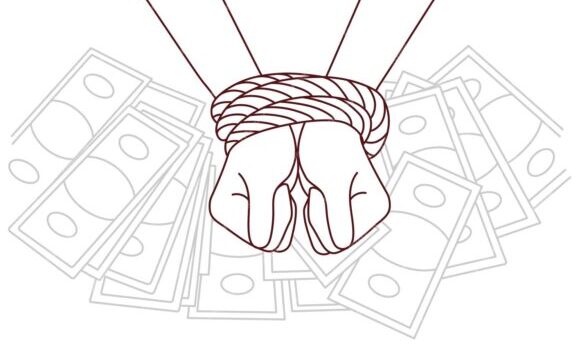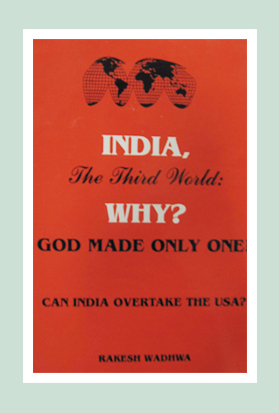Fiat Money: Is It a Failed Experiment?

News of scams and cyberfraud are rampant now, and their proliferation can send chills down the spine. As many as 85% people were targets of digital scam attempts, according to the 2024 Secure Living survey across 7 countries. While such news grabs the spotlight, there’s one scam that has been on for decades that doesn’t get enough attention. It’s called Fiat Money – or money that’s issued by governments.
Understanding the Scam
Quotable Quotes
“By a continuing process of inflation, governments can secretly confiscate wealth of their citizens.” ~John Maynard Keynes“Fiat money is a fraud based on the general acceptance of a worthless concept.”
~Murray Rothbard“Fiat money is the ultimate form of government control.” ~Ron Paul
Fiat money is so important in our lives. Yet, it doesn’t have any intrinsic value. The value is the number printed on a piece of paper! That’s all. It’s neither backed by productivity nor tethered to any tangible commodity. This means it can be artificially increased at any time, giving governments and central banks complete control over an economy.
When under pressure, governments may act recklessly and print bucket loads of money. That’s insane, you may say. You’re right. Since fiat money has no intrinsic value, what good does it do to pump in excess supply into an economy? Yet, this is so common that there’s a term for it – quantitative easing. We have experienced the impact of this, with inflation soaring to 40-year highs in the US and Europe in 2022. Hyperinflation has catastrophic effects on an economy. Zimbabwe had to abandon its currency in 2008 due to hyperinflation, after its government pumped too much money into the economy.
Artificially increasing the supply of money and then using interest rates to control the resultant inflation destroys the free market.
Fiat money is printed only to support the credit expansion objectives of central and commercial banks, according to German economist Thorsten Polleit. “It amounts to money creation from thin air or – in a way – counterfeiting money,” he says. How do we put a stop to this counterfeiting?
The Rise of Cryptos
Cryptocurrencies, digital currencies that are not issued or regulated by a central authority, can prevent counterfeiting. This is because they are designed that way. It’s nearly impossible to either counterfeit or double spend a crypto. Its network is completely decentralised, and its supply is determined by its protocol (set of predefined rules dictating how different entities interact within a network).
When Bitcoin was launched after the global financial crisis of 2008, most people were sceptical about its future. Feeling threatened by a currency that was truly created by the free market, most governments rushed to find way to shut it down. Yet, almost 15 years later, cryptocurrencies in still around and thriving.
To the naysayers, I’d like to say this: Worth only a few cents when it was launched, Bitcoin charged past $90,000 in mid-November. What more proof does one need of its acceptance?
Good only for speculation? Think about this: More than 15,000 businesses worldwide accept Bitcoin. So, you can exchange it for tangible goods and services. And giants like Amazon, Tesla, Google and Goldman Sachs have invested heavily into cryptos.
To those who say it’s too cumbersome to use: Ever head of crypto debit cards offered by renowned PSPs? Mastercard’s Crypto Card can be used to make digital currency payments across over 100 million locations.
Cryptos are more than a store of value or medium of exchange. They have made money transactions transparent, fast and low cost. By eliminating the need for authorities to issue it and banks to control it, cryptos are far more cost efficient even for cross border transactions.
 Rakesh Wadhwa. Ever since, I was a school boy, I knew India was on the wrong path. Socialism was just not what we needed to get ahead. Government controlled our travel; government controlled our ability to buy and sell; and government controlled our freedom to move our money. My life has focused on the inherent rights people have. When I was in college, I never understood, what the governments meant by their "socialistic attitude". If people are free to buy, sell and move their capital themselves without any restrictions by state, then the welfare of people is inevitable & hence the countries they live in will become wealthy. The government has no right whatsoever, to point a finger at me or my business. I am not a revolutionary. I just want to light up my cigarette and not get nagged about it. I believe in non-interfering attitude to attain more.
Rakesh Wadhwa. Ever since, I was a school boy, I knew India was on the wrong path. Socialism was just not what we needed to get ahead. Government controlled our travel; government controlled our ability to buy and sell; and government controlled our freedom to move our money. My life has focused on the inherent rights people have. When I was in college, I never understood, what the governments meant by their "socialistic attitude". If people are free to buy, sell and move their capital themselves without any restrictions by state, then the welfare of people is inevitable & hence the countries they live in will become wealthy. The government has no right whatsoever, to point a finger at me or my business. I am not a revolutionary. I just want to light up my cigarette and not get nagged about it. I believe in non-interfering attitude to attain more. 
 The Bastiat Award is a journalism award, given annually by the International Policy Network, London. Bastiat Prize entries are judged on intellectual content, the persuasiveness of the language used and the type of publication in which they appear. Rakesh Wadhwa won the 3rd prize (a cash award of $1,000 and a candlestick), in 2006.
The Bastiat Award is a journalism award, given annually by the International Policy Network, London. Bastiat Prize entries are judged on intellectual content, the persuasiveness of the language used and the type of publication in which they appear. Rakesh Wadhwa won the 3rd prize (a cash award of $1,000 and a candlestick), in 2006.
What the readers are saying…